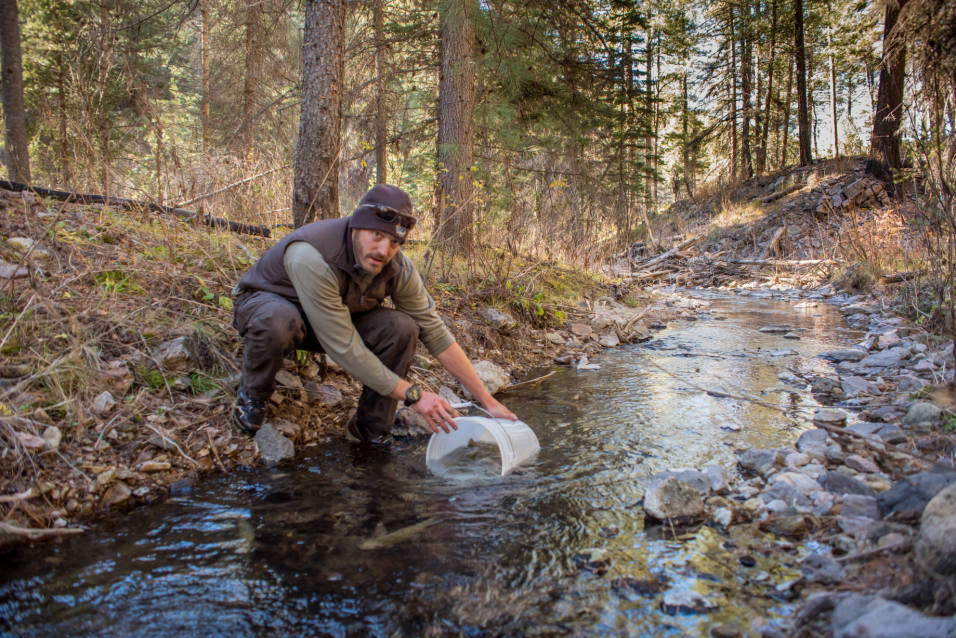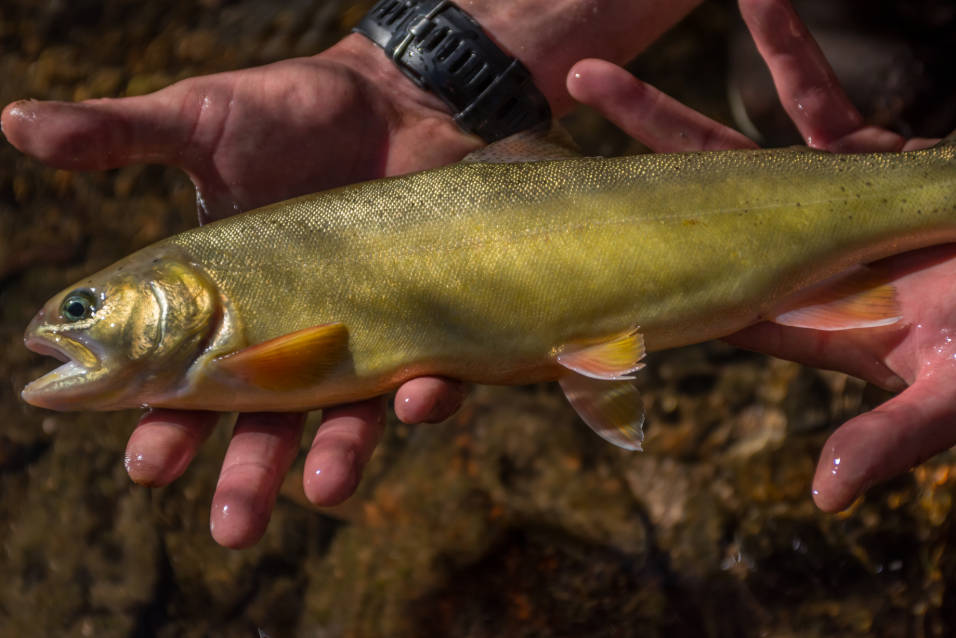The egg count was high at Mora National Fish Hatchery this spring, and that bodes well for the betterment of Gila trout. The copper-toned trout, dressed with a red band and peppered with black specks over its flanks, is considered threatened with extinction, and it’s native only to the headwaters of the Gila River in New Mexico and Arizona. The federal fisheries facility near Mora, New Mexico, figures significantly in Gila trout conservation.
Each spring hatchery biologists carefully spawn five distinct lineages of Gila trout. The offspring eventually make their way into the wild for the express purpose of recovery of the species with a goal of removing the trout from the list of threatened and endangered species.
This year biologists spawned 453 pairs of Gila trout that yielded nearly 131,000 eyed eggs. The resulting young fish will remain in captivity from one to two years before heading out to the wild. Most of the fish will be stocked in streams in the Gila National Forest as designated by fishery managers.
“We had unprecedented spawning success with our Gila trout lineages in 2017,” said Hatchery Manager Nathan Wiese. “We handily met our broodstock and recovery goals, which opened the opportunity to ship Gila trout eggs to Sterling Spring hatchery in Arizona—a first.”
Gila trout eggs being readied for incubation at the Mora National Fishery Hatchery (Video: Nathan Wiese):
Of the nearly 131,000 eyed eggs, more than 65,000 were shipped to the hatchery operated by the Arizona Game and Fish Department. These Gila trout will be available to anglers in Frye Mesa Reservoir and other Gila trout waters in Arizona.
The Gila trout consists of five distinct populations coinciding with five distinct and widely separated headwater streams in the Gila National Forest on the Mogollon Rim, an area of conservation emphasis for the U.S. Fish and Wildlife Service. The hatchery holds Gila trout from each population in captivity. Each population is intensively managed in the hatchery to preserve robust genetics unique to each stream.
The Gila trout is considered a threatened species under the Endangered Species Act, and occurs naturally only in the headwaters of the Gila River system of New Mexico and Arizona. Conservation work by the New Mexico Department of Game and Fish; Arizona Game and Fish Department; U.S. Forest Service; U.S. Fish and Wildlife Service; Trout Unlimited; University of New Mexico; and the helping hands of dedicated citizen-conservationists improved the status of the rare trout.

When the eggs have hatched and the young fry have grown, these newest Gila trout will be released into their native waters in New Mexico and Arizona. (Photo: Craig Springer/USFWS)
Gilas were the nation’s only endangered trout until 2006, and the species was closed to fishing for more than 50 years. Gila trout populations were re-opened to angling in 2007.
Mora National Fish Hatchery is one of 70 national fish hatcheries located across the country. The facility is entirely indoors and operates with a state-of-the-art water circulation system. The hatchery also holds a small population of endangered bontyail, a fish found naturally only in the Colorado River system. The hatchery is open to visitors daily.
The mission of the U.S. Fish and Wildlife Service is working with others to conserve, protect and enhance fish, wildlife, plants and their habitats for the continuing benefit of the American people. We are both a leader and trusted partner in fish and wildlife conservation, known for our scientific excellence, stewardship of lands and natural resources, dedicated professionals, and commitment to public service.
For more information on this important work and the people who make it happen, visit fws.gov/southwest/.

